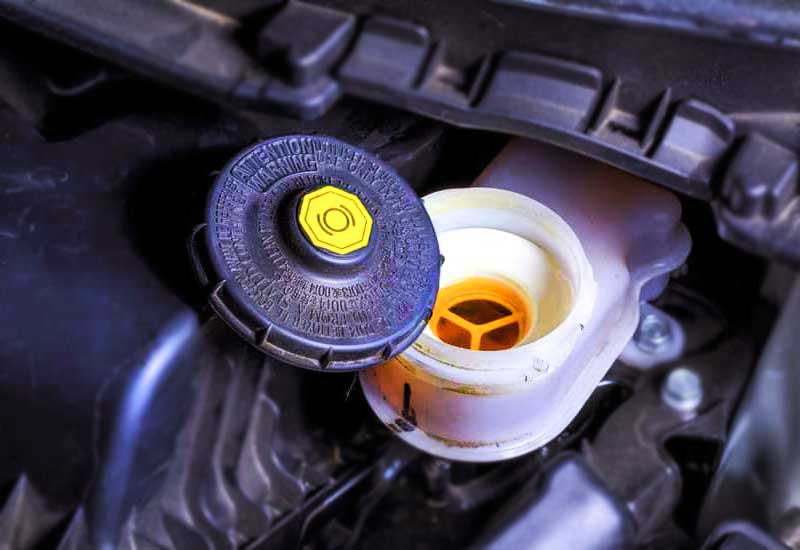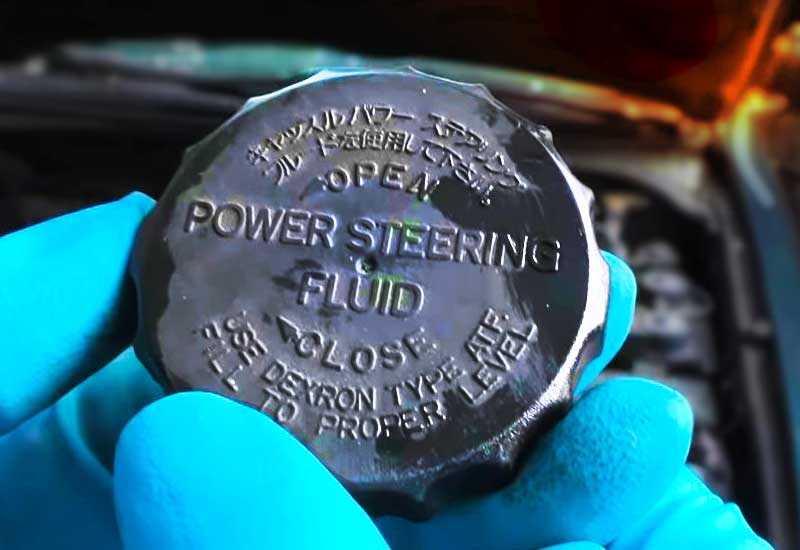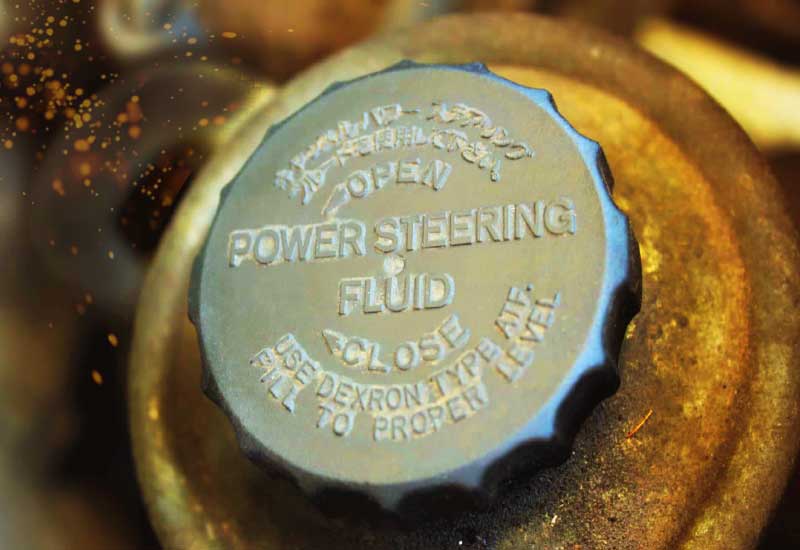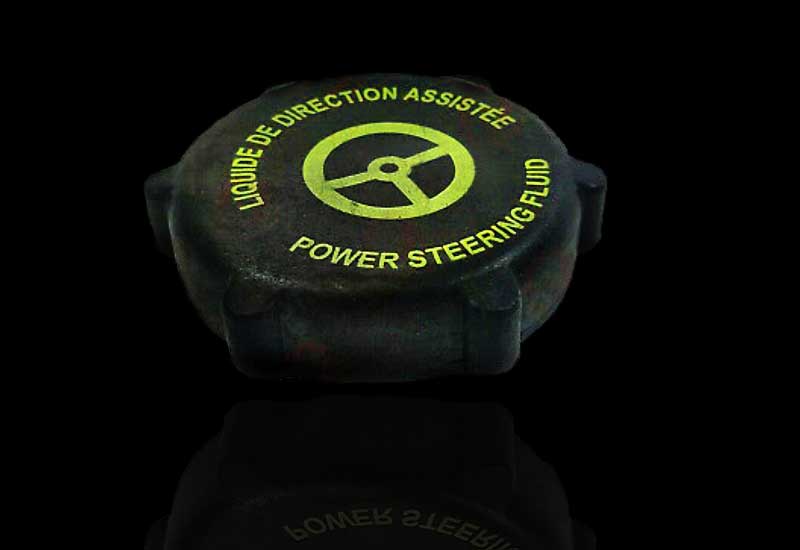Power Steering Fluid Symbol – Indication & Solutions
Power steering is pretty exciting because it makes car handling a lot easier. Well, if your car has a power steering system then you should feel lucky. Otherwise, you would feel pain in your arms every time you drive.
Also, power steering systems can work on different phenomena. Today, we will talk about the hydraulic system that works on the basis of fluid.

Power Steering Fluid Symbol in Details
Indication
Before getting into the details, it is necessary to understand the indication and the consequences.
The symbol or light, that illuminates if something is wrong with your power steering fluid, is a steering wheel with an exclamation mark. Whenever you start your car and this light pops up, you should know that something’s wrong with the fluid.
Well, there are two main cases:
- Low Fluid Level: If the light comes on, you should open the bonnet and check the steering fluid bottle. If the level is low, you should fill it and check if the light’s gone or not.
- Technical Fault: On the other side, if you fill the bottle/tank and the light does not go, then you should get your car inspected asap. Because there can be a serious problem that you should not ignore.
Can you drive with Low Steering Fluid?
The answer is yes! But there will be a problem with that as well. Steering fluid makes it so easy to handle your car. But when the system is not working, you will feel hard steering that is difficult to steer. So, it is suggested that you get this issue resolved asap to avoid uncertainty.

How to Check Power Steering Fluid?
I told you about the general stuff, but you should also know about the specifics. Like, I mentioned checking the power steering fluid and did not mention how to check it. Well, do not worry because I am going to guide you through the whole process.
To keep this mechanism healthy, please keep track of three things. Here is a complete guide to checking the power steering fluid!
1. Check the Fluid Levels
There are two ways to know the fluid levels of your power steering. They are built-in and depend on the car that it has what kind of fluid level measuring system. You may find a dipstick or level markings on the container.
With level markings, it is not a big deal to check the fluid level of your car’s power steering. But with the dipstick, go like this!
- First off, remove the dipstick from the container.
- Wipe it to see the maximum and minimum level markings.
- Now, again put the dipstick in the fluid and take it out.
- You will see the oil close to either minimum or maximum level.
- If the fluid is near the minimum level, then it needs a refill. Otherwise, you have time to get it refilled.
Read also: How To Flush Power Steering Fluid
2. Check the Color of the Fluid
Well, in the automotive world, contamination can do a lot of damage, my friend. That’s why you should also check the color of the fluid. Moreover, you should also look for the contaminants if there are any.
Remember that dirty fluid can reduce the performance up to a good extent. So, you should never tolerate dirty fluids. There is also a chance of oxidation of the fluid. Oxidation can cause a change in color. This is also an indication that you should replace the oil.
Also, a question arises that how you would know about the color of the fluid. Well, that’s not a big deal. It depends on the grade and model of the fluid being used that you will find out. But it is usually in red shade.
3. Check for the Leakages
There is also a chance that there is a leakage somewhere. In that scenario, all of the refillings will go in vain. But guess what, we will check that as well. Because we don’t like taking risks when it comes to vehicles.
When you park your car and then drive it away afterward, you may see some oil on the ground where you parked the car. To make sure if it is the steering oil, you should place a white sheet under the car.
If you see a red-colored oil on it. That means it is your steering oil. In that scenario, do not wait any longer and get it inspected by a mechanic.
Once you get this issue fixed, you are ready to refill it and drive again with no worries.

How to refill the steering fluid?
Now, that is easy. When you notice that the fluid level is low. Get the fluid for it first. Remove the cap of the container and pour the fluid near the maximum level.
Make sure that you pour the right fluid. For that, you can take recommendations by telling the model to the expert.
Moreover, to avoid a mess, I would recommend you use a funnel for the procedure. Just place the funnel on the opening and pour the fluid. In this way, you will not make any mess under the bonnet.
After pouring, close the cap well and use some rag to clean the residue if there is any.
Read Also: Check Power Steering Oil Hot or Cold!
Type of Steering Fluid
There are numerous steering fluids available in the market. Getting the right one can be difficult. But do not worry. The first thing that you should do in this scenario is read the owner’s handbook. You will find the right fluid for your model.
But if by any chance, you are unable to find that you can refer to the manufacturer or the owner to find the right fluid. Make sure that you do not buy the wrong one. Because that can cause trouble and make you regret it afterward.
So, never compromise on the type of fluid that you are getting for your power steering. Once you find it, then it is time to either fill the container or replace the fluid out of it, depending on the scenario.
Advantages of Power Steering
Power steering has a number of advantages that you may observe or not. Well, there are some directly related to your comfort while others relate to the improved technology.
- Power steering prevents the wheels of your car from transferring load to the steering column.
- Power steering lowers down the input torque and thus the continuous steering function.
- The oil output is proportional to the speed of the steering in a direct manner.
- You feel a lot easier to handle the car because power steering reduces the driver’s fatigue.
But you should know that when the mechanism fails or the fluid level gets low, you will have to put more force than manual steering to handle your car.
Frequency of Fluid Checking
As I mentioned before about the checking procedure of the reservoir fluid. But there ought to be a frequency of checking as well.
If you get your car tuned regularly, then you do not have to worry about the frequency of checking. Because the mechanic will do that and tell you if something’s wrong.
On the other side, if you do not go to get your car tuned (you missed it by any chance), you can do it yourself. you just have to keep in mind the time (like it is in between your tuning sessions) and then you can check the fluid level according to the procedure that I have mentioned above.

How to Locate the Reservoir?
Usually, the word ‘steering’ is embossed on the reservoir. But you should know that usually, the reservoir is located on the passenger’s side.
It is near the belts that are located in the smaller or transverse-mount engine. But remember that sometimes, you will find the reservoir on the driver’s side as well. So, it basically depends on the vehicle.
When you get to the reservoir, there may be markings on it. Use a cotton rag to make the markings clear. Then you can easily see the level. Otherwise, if there is a dipstick involved, then you know the drill already.
Adding the Fluid
I know that I have already discussed the refilling process. But there are some points that I want to mention separately for further clarity.
- Like, once you are clear about the fact that there is no leakage. Moreover, your power steering mechanism has no technical issues, it is time to add the fluid.
- Before pouring the fluid in, make sure that the bottle is clean and there is no dirt around. Otherwise, there is a chance for the dirt to get into the reservoir and make things worse.
- So, clean around before and after pouring the fluid. Also, fill the fluid to the max mark that corresponds to the engine temperature.
- Also, replace the cap and ensure a good tightening to avoid any problem.
Thumb Rules of Adding the Fluid
Here are some hacks of adding the power steering fluid that I want to discuss separately to help you remember easily.
- Always clean the reservoir as well as its surroundings before adding the fluid to avoid any dirt.
- Double-check for the leakages because they can lead you to bad consequences. You will not just waste your money but also time.
- Use a funnel to pour the fluid. Otherwise, you will create a mess under your hood. If you are a good pourer, then it’s fine, but in the opposite case, you will make things worse. So, a funnel will be extremely helpful.
- Make sure that you place the cap well and tighten it to the full limit to avoid any spillage.
- Remember these thumb rules and you will get done with this process efficiently and easily.
How to Stay Preventive?
When you own a car, you should always prefer preventive maintenance. Being an engineer, I always recommend others to take care of their vehicles.
Because if you go for corrective maintenance, it will certainly make things worse. You will just not lose more money it will also take more time and cause fatigue.
So, keep checking your power steering system at regular intervals to avoid any inconvenience. I would suggest you take a look at it every four weeks. You can also take suggestions from the mechanics in this regard.

Signs of a Bad Power Steering
If somehow, you miss the preventive maintenance of your car’s power steering system, then you may come across the following signs.
- You will hear a whining sound every time you turn your car’s steering.
- Your car’s steering will become pretty stiff. That means it would be really hard for you to turn your car.
- The response time will get disturbed. That means, your steering will get slower in its performance.
- On turning the key in the ignition, you may hear a squealing sound coming out of your car.
- There can be other signs as well. But the above ones are important.
Replacing the Fluid
- Flushing can be necessary depending on the situation. Like, the oil gets contaminated, and you have to get it out. Or there is a preventive necessity that you should replace the fluid.
- You can refer to the manual of your car to see the flushing schedule. Once it is necessary to flush the oil out of your steering system. You should lift the front of your car using a jack.
- Make sure that both the front wheels are lifted. Now, slide under it and locate the tray beneath the power steering system. You have to remove this tray.
- Disconnect the low-pressure hose from the steering pump at its lowest point and drain the fluid. Get done with this step and do the reassembling.
- Now, unscrew the cap and add the new fluid. Add half of the fluid and turn your car ON. Add the remaining fluid afterward.
Final Thoughts
There is all that you should know about the power steering fluid symbol and the problems associated with it. Keep in mind all the factors to resolve your issue. Do not skip or miss anything when it comes to your vehicle. Take proper care of it to avoid uncertain problems. Have a great day!

